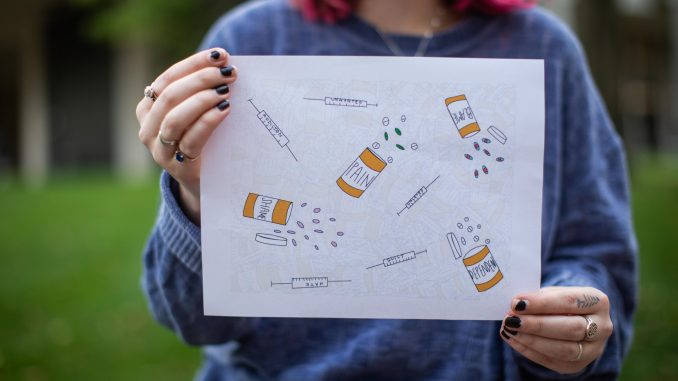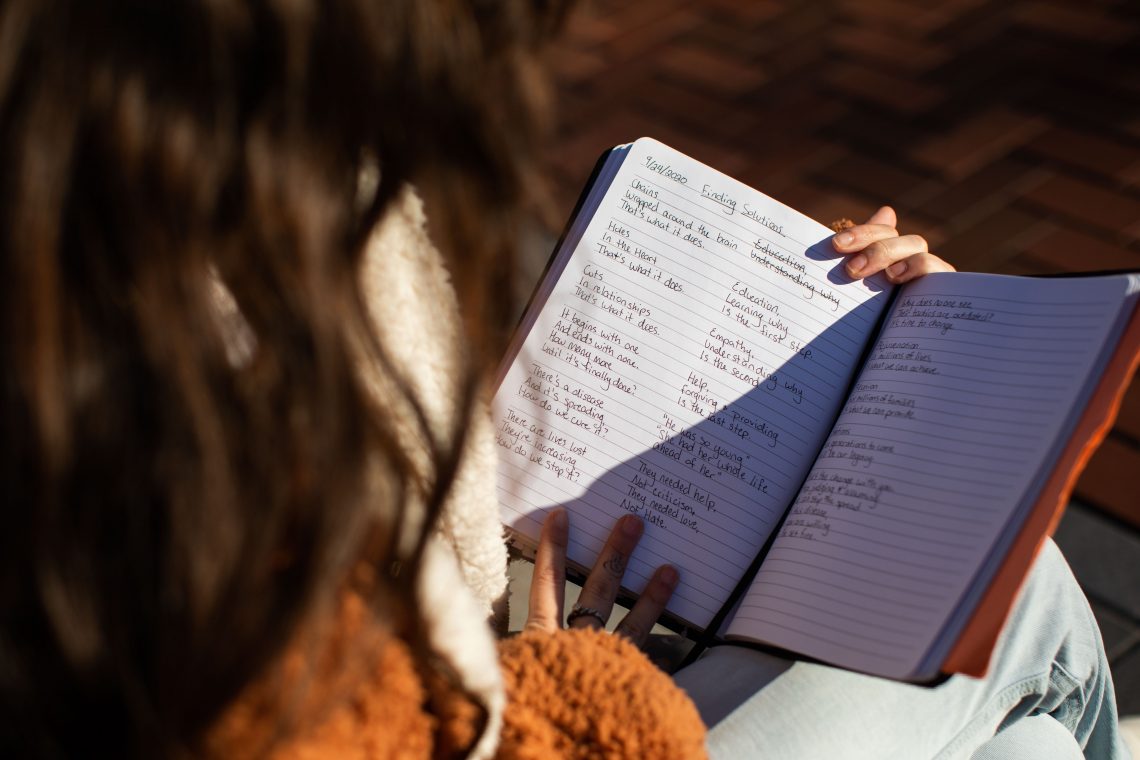
After family experiences with substance use disorder, Zoe Sohenick decided to show her support through her writing, she said.
“I don’t think many people really realize how serious of like, an issue and disease that it is unless people are directly affected by it,” said Sohenick, a sophomore media studies and production major.
Sohenick became a student leader for Art for Change, which is the third part of the My Lens project, aimed at ending the stigma associated with opioid addiction in Philadelphia and creating meaningful conversations through artwork by Temple University students.
The Art for Change exhibition was posted virtually on Nov. 12, showcasing poems, collages, digital designs and infographics from 12 Temple students. It will remain online indefinitely, and the artwork will be posted on My Lens social media pages like Instagram and Facebook.
Sohenick wrote a poem called “Finding Solutions” about educating people to understand the effects of the opioid crisis, and how to support people experiencing substance use disorder.

By illustrating how people within the Temple community can be personally affected by substance use disorder, ‘Art for Change’ hopes to spark conversations that can help to support people experiencing it, said Leeannah McNew, a senior advertising major.
Substance use disorder is a disease that causes people to be unable to control their use of legal or illegal drugs, according to The Mayo Clinic.
McNew’s piece is a digital drawing called “Interpersonal Conflicts” depicting pill bottles and needles with the words “pain,” “shame,” “blame” and “dependence”’ written on them.
McNew got involved with the project through her professor, and though she hasn’t personally experienced opioid addiction, she wanted to use art to create positive change in her community, she said.
“I just want to use my art for good and to create conversations,” said McNew, a student leader for the exhibition. “I’m realizing at 21 that I have the privilege to do that and be a part of a small change, even if I’m just a small factor in the larger conversation.”
In 2017, out of the 1,217 overdose deaths reported from all types of drugs, 1,074 involved opioids, according to the City of Philadelphia.
Since 2017, the city responded with multiple initiatives, including the Philadelphia Resilience Project, which utilizes 35 city departments to combat the opioid crisis, according to the City of Philadelphia.
Temple uses community-based efforts by introducing prevention, harm reduction, education and treatment services to people experiencing opioid addiction, according to Temple Health.
“We need to be educated so we don’t spread misinformation and stigma around substance [use] disorder,” Sohenick said.
Deirdre Dingman, a social and behavioral sciences professor, and Marsha Zibalese-Crawford, a social work professor, began the My Lens project this year after applying for State Opioid Response grants from the Substance Abuse and Mental Health Services Administration, a U.S. Department of Health agency that tries to reduce instances of substance use disorder and mental illness.
The start of the program provided campus presentations on how to handle overdose situations and administer Narcan, a medication that can reverse overdoses, and gave students and faculty connections to treatment and other resources, Dingman said.
“The overarching goal is to increase access to prevention, treatment and recovery services for opioid use disorder, especially by reducing stigma around substance use and harm reduction efforts,” Dingman said.
Viewers can comment through a discussion board on the platform until Friday, Nov. 20, to engage with artists.
One anonymous comment on the exhibition read, “This is such a beautiful set of pieces, I am super impressed and inspired by all the artists. Awareness for the opioid crisis should never stop.”
Dingman and Zibalese-Crawford will draft a research publication sharing the results of increasing access to prevention, treatment and recovery through the My Lens project to the scientific community, Dingman said.
“If we can talk about people with this illness like we talk about people with other illnesses, maybe there will be more empathy and understanding, especially around treatment,” McNew said.
Correction: A previous version of this article used inaccurate terminology to describe substance use disorder and the opioid crisis. It has since been corrected. The Temple News apologizes for this mistake.



Be the first to comment